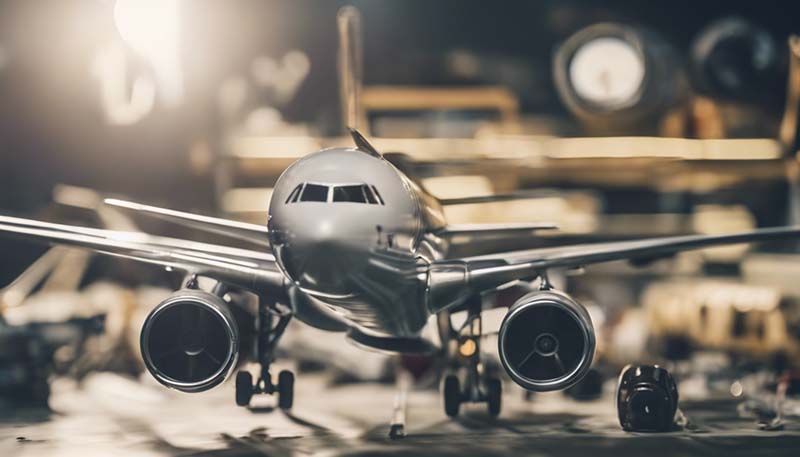Introduction
The aviation industry is a complex and highly competitive sector that plays a crucial role in the global economy. It connects countries, facilitates international trade, and enables millions of people to travel for business or leisure. However, the industry faces numerous challenges, including high costs, regulatory compliance, and environmental concerns. In this context, government subsidies and support have emerged as vital tools to ensure the industry's growth, development, and competitiveness. This article aims to explore the role of government interventions in the aviation industry, discuss the benefits and drawbacks of such support, and highlight the importance of striking a balance between public and private interests.
History of Government Subsidies in the Aviation Industry
The aviation industry has a long history of government support, dating back to the early days of commercial air travel. In the 1920s and 1930s, governments around the world began to recognize the strategic importance of aviation and started providing financial assistance to fledgling airlines. This support took various forms, including direct subsidies, tax incentives, and the provision of infrastructure such as airports and air traffic control systems.
Advertisement
During the post-World War II era, the aviation industry experienced rapid growth, driven by technological advancements and the increasing demand for air travel. Governments continued to play a significant role in the development of the sector, often establishing national flag carriers and providing them with preferential treatment in terms of routes, pricing, and access to funding. This period also saw the emergence of regional and international organizations, such as the International Civil Aviation Organization (ICAO), which aimed to promote the safe and orderly development of global air transport through cooperation and regulation.
Forms of Government Support in the Aviation Industry
Government support for the aviation industry can take various forms, ranging from direct financial assistance to more indirect forms of intervention. Some of the most common types of support include:
- Direct subsidies: These are financial contributions provided by the government to airlines or other industry stakeholders to help cover operational costs, fund research and development, or support the construction of infrastructure.
- Tax incentives: Governments may offer tax breaks or exemptions to airlines and aviation-related businesses, reducing their financial burden and encouraging investment in the sector.
- Loans and loan guarantees: Governments can provide low-interest loans or guarantees to support the growth and expansion of airlines and aviation-related businesses, enabling them to access capital more easily.
- Regulatory support: Governments can create a favorable regulatory environment for the aviation industry by streamlining processes, reducing red tape, and ensuring fair competition among airlines.
- Provision of infrastructure: Governments can invest in the development and maintenance of airports, air traffic control systems, and other aviation infrastructure, providing a solid foundation for the industry's growth.
Benefits of Government Subsidies and Support in the Aviation Industry
Government subsidies and support can bring numerous benefits to the aviation industry, both in terms of economic growth and social development. Some of the key advantages include:
- Promoting competition: Government support can help level the playing field for smaller airlines, enabling them to compete with larger, more established players. This can lead to increased competition, lower prices, and better services for consumers.
- Encouraging innovation: By funding research and development efforts, governments can help drive technological advancements in the aviation industry, leading to more efficient, safer, and environmentally friendly aircraft and systems.
- Facilitating connectivity: Government support can help ensure that remote or underserved regions have access to air travel, fostering economic development and improving the quality of life for local populations.
- Supporting national interests: In some cases, government support for airlines can be justified on national security or strategic grounds, ensuring that countries maintain a strong and independent aviation sector.
Drawbacks and Criticisms of Government Subsidies and Support
While government subsidies and support can bring numerous benefits, they also face criticism and potential drawbacks. Some of the main concerns include:
- Distorting market competition: Government support can sometimes create an uneven playing field, with subsidized airlines gaining an unfair advantage over their competitors. This can lead to market inefficiencies and stifle innovation.
- Encouraging dependency: Prolonged or excessive government support can create a culture of dependency among airlines and other industry stakeholders, discouraging them from seeking private investment or improving their financial management.
- Strain on public resources: Government subsidies and support can place a significant burden on public finances, diverting resources away from other important areas such as healthcare, education, and infrastructure.
- Environmental concerns: The aviation industry is a major contributor to greenhouse gas emissions, and government support can sometimes be seen as contradictory to broader environmental goals and commitments.
Striking a Balance Between Public and Private Interests
Given the benefits and drawbacks of government subsidies and support in the aviation industry, it is essential to strike a balance between public and private interests. Some possible approaches include:

- Targeting support: Governments should focus their support on areas where it can have the most significant impact, such as research and development, infrastructure development, or connecting underserved regions.
- Promoting transparency and accountability: Governments should ensure that their support for the aviation industry is transparent, well-regulated, and subject to appropriate oversight, minimizing the risk of mismanagement and corruption.
- Encouraging private investment: Governments can help create a more level playing field by reducing barriers to private investment in the aviation sector, promoting public-private partnerships, and fostering a competitive business environment.
- Addressing environmental concerns: Governments should work with the aviation industry to develop and implement strategies for reducing emissions and promoting sustainable practices, ensuring that their support aligns with broader environmental goals.
Conclusion
The role of government subsidies and support in the aviation industry is multifaceted and complex. While such interventions can bring significant benefits in terms of promoting competition, innovation, and connectivity, they also face criticism and potential drawbacks. Ultimately, striking a balance between public and private interests is crucial to ensuring the long-term growth and development of the aviation sector in a sustainable and equitable manner.